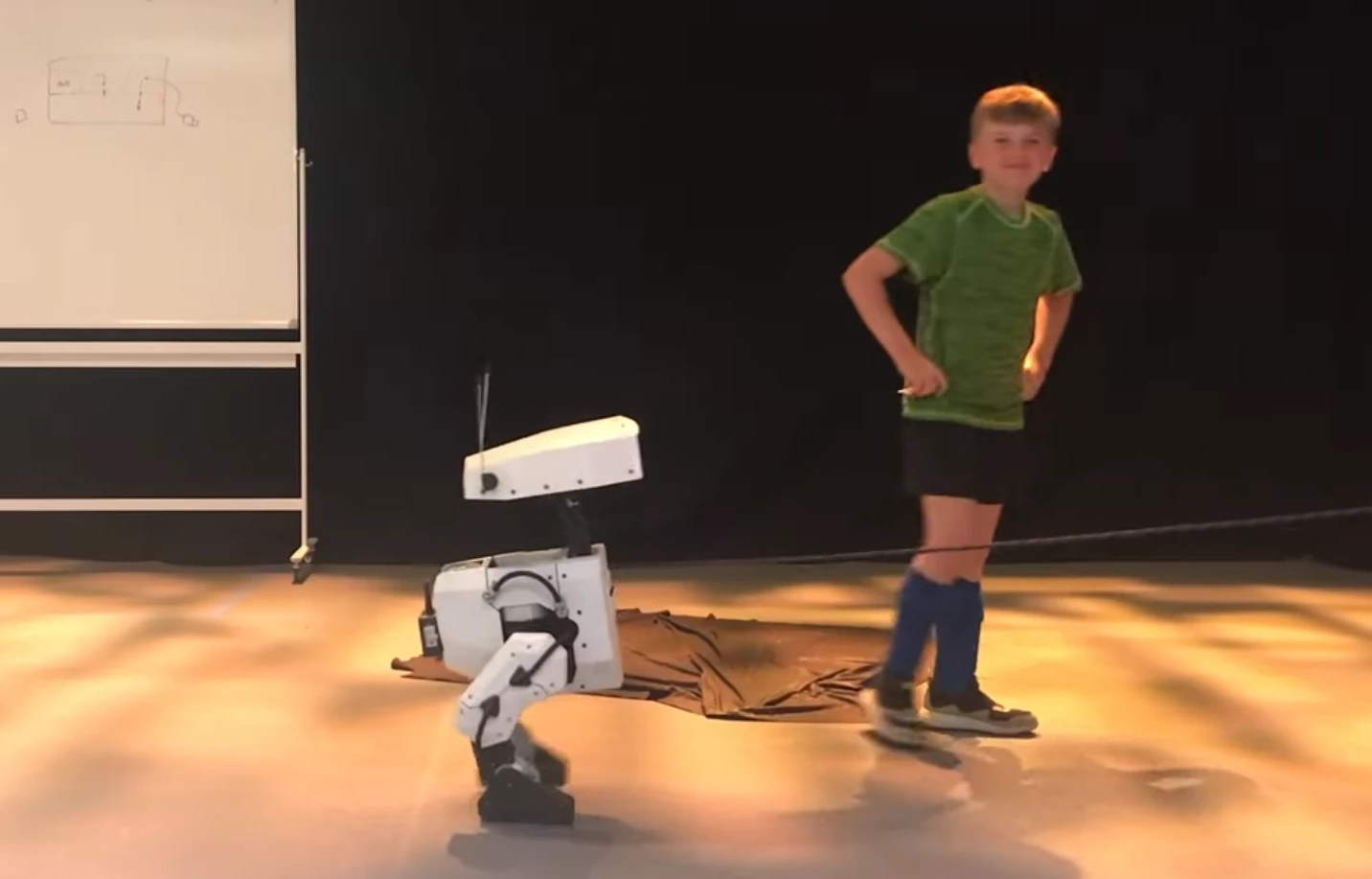Most robots walk like they've soiled themselves; this one walks with a crazy amount of personality. Disney is getting very good at combining the art of character animation with the science of bipedal robotics, and the results are ... adorable.
Unveiled at the IEEE IROS conference in Detroit last week, this new, unnamed robot is clearly based on the BD-1 designed for 2019's Star Wars Jedi: Fallen Order video game, developed by Respawn Entertainment.
Like BD-1, it's got a fairly compact, boxy little body, with a pair of stumpy, bird-like reverse legs, and a flattish head with eyes, a temple-mounted flashlight and a little pair of antennae. The head is capable of a wide range of articulation, and here's where a lot of the personality comes in.

In order to make him look more friendly and appealing, BD-1 was designed to mimic some dog-like behaviors. When he's curious about something, he'll tilt his head. His antennae are able to rotate, and they mimic the movements of a dog's ears. He comes across as earnest, inquisitive and downright adorable.
And it's remarkable just how well these movements translate into a real-world robot. Check out the video:
It's part of a longer-term push Disney has been working on to design robots that are capable of moving with style and character, using a system that starts out with stylized movements designed by animators, and uses machine reinforcement learning to incorporate the essence of those movements into the robot's physics- and sensor-based motion controls.
Obviously, things like balance and functional movements have to take precedence, but where something can be done in a way that's expressive or stylized, they do. According to IEEE Spectrum, the new system "takes care of implementing the constraints of the physical world, letting the animator develop highly expressive motions while relying on the system to make those motions real."
A lot of the work here is done in simulations, greatly accelerating the training process, and as a result, Disney says it's now able to program walking robots with unique gaits and body language traits within a matter of months.

Obviously, this kind of thing seems likely to evolve toward live-action robots that might roam around Disney's theme parks in the coming years – although the company isn't currently revealing any such plans.
But more broadly, what we see here is the beginning of a process that'll eventually be relevant to all sorts of robots, particularly humanoids. Body language is a powerful tool for communication, and imbuing robots with this kind of 'personality' could go a long way towards acceptance – and indeed, the development of genuine affection between humans and bots as they proliferate.
These kinds of cutesy motions obviously elicit one sort of response, but there are other kinds of body language that could be just as important. You might want your security robots to walk around looking friendly and welcoming most of the time, but to become aggressive and intimidating in other circumstances.
Household android assistants might be given region-specific body language in order to make sure people are comfortable having them around. There will certainly be a need for expressive body language once sex robots start rolling out – dare I say, humanoid or otherwise.

And since humans have a subconscious tendency to mimic the body language of people we're communicating with, it would seem that some future development of this kind of tech might eventually be able to 'read the room,' analyze the motions of those around it, and adjust its own body language to better fit in with the people around it.
Fascinating stuff!
Source: Disney Imagineering via IEEE Spectrum








